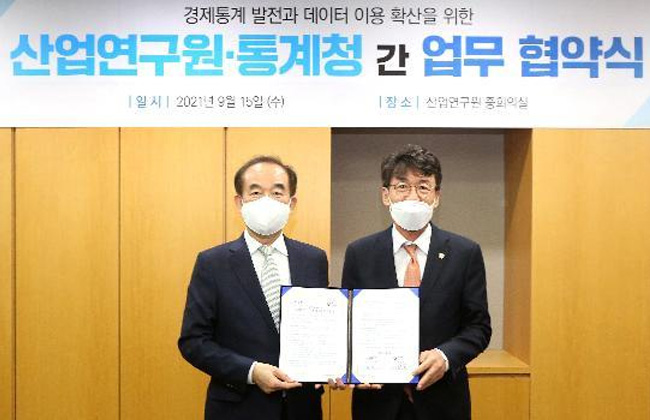The domestic real economy is showing weakness in exports, investment, and consumption, constraining economic growth. Exports have slipped due to price declines in semiconductors, automobiles, and petroleum products, as well as slack global demand and policy uncertainties in major economies. Semiconductors have been severely affected by falling unit prices, and overseas demand for South Korean autos has slowed. These conditions, in addition to the base effect of strong export performance in the previous year, conspired to produce a negative growth rate (-2.1 percent) in exports in the first half (H1) of 2025. This is the first time exports have actually fallen since the third quarter (Q3) of 2023.
Private consumption has slowed too across both goods and services, with the exception of consumption of some durable goods, such as automobiles. Domestic political uncertainties, an inflationary environment, and high interest rates have all worked to dampen consumer sentiment, resulting in overall sluggish domestic demand. Facility investments have also tumbled, especially investments in chip manufacturing equipment. Construction investment continued its freefall, recording its fourth consecutive quarterly decline.
At the same time, industrial production has shown some signs of recovery. After significant volatility in H2 of last year, manufacturing production began to tick back upward starting in February 2025. Service sector output has also climbed, albeit modestly, since the beginning of this year.
However, key indicators used to assess economic conditions remain unstable. The cyclical component of the leading index temporarily rebounded after February 2025 but has recently reverted to a downward trend. Also, the cyclical component of coincident index continues to decline with no clear signs of a rebound since last year. Despite a modest recovery in production, continued contractions in exports, consumption, and investment, along with heightened uncertainty in key economic sectors, are expected to significantly hamper domestic growth in the near term.
Hello.
I’m Sung Wook HONG, Senior Research Fellow and Director of the Office of Economic Outlook at the Korea Institute for Industrial Economics and Trade.
I’d like to discuss the current economic conditions in South Korea and the world and the macroeconomic outlook for 2025.
Recently, Korea’s real economy has entered a downturn, driven by a decline in exports due to weak unit prices of major export items early in the year,
sluggish demand amid intensifying global uncertainties, and a reverse base effect from strong performance during the same period last year.
In addition, heightened domestic political uncertainty has dampened consumption and investment, resulting in sluggish performance across all sectors.
As the global economy enters a transitional phase driven by changes in US trade policy,
global economic growth in 2025 is expected to fall off from its 2024 performance.
Assuming an average annual oil price of around USD 67 per barrel and a 3.6% increase in the KRW/USD exchange rate compared to the previous year,
Korea’s economy is projected to grow by around 1% in 2025.
Domestic demand should tick up modestly, with private consumption increasing by 1.0%
and facility investment by 1.8%. Construction investment, on the other hand, is set to contract by 4.7%.
Exports and imports are forecast to decline by 1.9% and 2.1%, respectively.
Now, let’s take a look at a few graphs for more details.
First is the outlook for economic growth in 2025.
In 2025, Korea’s economy is expected to grow at around 1% year-over-year (YoY).
This weak figure owes to sluggish exports and lower trade volumes triggered by uncertainties surrounding US tariff policy.
Despite the launch of a new government and supplementary budget effects, recovery in domestic demand is projected to remain quite mild.
Domestically and globally, key variables will include the ripple effects of the US-China trade conflict,
uncertainties surrounding trade and monetary policy, and the potential for increased financial market volatility.
On the domestic front, additional variables include consumer and investment sentiment,
and the extent of any decline in exports due to worsening trade conditions.
An easing of US-China trade tensions and a more favorable trade environment might prompt an upward adjustment to Korea’s economic prospects this year.
Also, the launch of the new administration and its economic stimulus policies could have a positive impact on the Korean economy.
Next up is the outlook for private consumption.
Overall, private consumption is expected to grow by around 1.0% compared to the previous year,
aided by the launch of a new government and easing political uncertainties,
likely interest rate cuts, and expectations for economic stimulus from the new administration.
But overall consumption growth will be capped due to persistently high levels of household debt,
rising perceived inflation, and only a modest recovery in consumer sentiment.
Next up is the outlook for investment.
Despite rising prices of imported capital goods and heightened uncertainty in major countries’ trade policies dampening investment sentiment,
overall facility investment should actually increase by about 1.8% YoY supported by continued strength in the semiconductor industry driven by robust demand for high-value memory chips.
Construction investment, however, is expected to tumble by 4.7% compared to the previous year,
as leading indicators for the construction market remain weak,
with growing unsold housing inventories and sluggish trends in permitting and groundbreaking.
Finally, let’s take a look at the outlook for exports and imports.
Exports in 2025 are expected to decline by 1.9% YoY.
Although exports of AI-related semiconductors, ICT devices, shipbuilding, and biotech products should remain strong,
the continued US-China trade conflict, uncertain U.S. tariff policy under the Trump administration,
and a global trade contraction are likely to weigh on overall exports.
Imports are also expected to decline by about 2.1% compared to the previous year despite a weaker won,
as oil prices fall and demand for intermediate goods contracts amid a sluggish export environment.
Overall, the balance of payments for 2025 is projected to sit at USD 52.4 billion, a slight increase over 2024.
[REPORT]
https://www.kiet.re.kr/trends/ecolookView?ecolook_no=52&skey=&sval=
이메일 수집방지를 위해
아래 보안문자를 입력해 주세요

아래 보안문자를 입력해 주세요

담당자 정보를 확인해 주세요.
연구과제 제안이 접수되었습니다.
신청이 접수되었습니다.


코로나19 발생 이후 대부분의 고용 관심사가 항공 및 여행서비스, 음식·숙박 서비스 등 주로 서비스 업종에 집중된 상황에서 본 연구는 최근 그 중요성이 강조되고 있는 제조업의 고용변화를 살펴보았다. 분석에 따르면, 코로나19 이후 제조업 고용은 비교적 큰 충격 없이 빠르게 회복하는 모습을 보이고 있다. 제조업 고용은 서비스업에 비해 큰 충격 없이 유지되고 있고, 코로나19 직후 2020년 상반기에 약간 하락하였지만 하반기부터 회복 추세를 보이고 있으며, OECD 주요국의 제조업과 비교하여도 일본과 함께 고용 충격이 비교적 작게 나타나고 있다. 그러나 전반적으로 양호한 고용 성적에도 불구하고 제조업 내 특성 별로는 차이가 나타나는 것으로 보인다. 종사상 지위 별로 보면, 임시·일용직, 고용원이 있는 자영업자에서 고용 충격이 상대적으로 크게 나타났고, 상용직과 고용원이 없는 자영업자는 큰 충격이 없는 것으로 나타났다. 제조업 규모별로는 300인 이상의 경우 코로나 발생 초기 약간의 충격 이후 고용이 빠르게 반등하면서 코로나 이전보다 고용이 더 증가한 반면, 이보다 작은 규모의 제조업체들의 경우 고용 회복이 더디게 나타나고 있다. 고용의 중장기, 단기 추세선을 비교한 결과 제조업 업종에 따른 차이를 보였다. 코로나 발생 이전 3년간의 추세선을 2020년 1월부터 연장한 선과, 2020년 1월부터의 실제 자료를 이용한 단기 추세선을 비교한 결과, 의약품은 코로나19 발생 이전부터 시작하여 코로나19 발생 이후에도 견조한 증가세를 유지하고 있으며, 전자부품·컴퓨터, 기타운송장비, 가구는 코로나19 이후 오히려 고용 추세가 개선되었다. 그러나 다수 업종은 코로나 발생 이후 고용이 하락하였는데, 특히, 비금속광물, 1차금속, 금속가공 분야나 인쇄·기록매체 업종에서 하락이 상대적으로 크게 나타났다.
담당자 정보를 확인해 주세요.
inform@kiet.re.kr이름 : 박홍서
전화번호 : 044-287-3811
정보의 무단수집 방지를 위해
아래 보안문자를 입력해 주세요.

비밀번호를 입력해주세요.
[전지적키에트시점] (Eng sub)심상치 않은
국내 대기업 움직임??
KIET 시점에서 보는 미래 로봇 산업 전망은
어떨까요?
경제전문가가 알려드립니다!
(산업연구원 박상수 실장)